Using a diffuser as a humidifier for plants is a common question among plant enthusiasts. While both devices add moisture to the air, they work differently. Humidifiers use a wick or filter to absorb water and release it into the air, while diffusers use ultrasonic vibrations to create a fine mist of water and essential oils.
The main difference between a diffuser and a humidifier is the amount of moisture they produce. Diffusers are smaller and produce less moisture, making them ideal for small spaces or plants that require low levels of humidity. However, they may not be as effective as a dedicated humidifier for plants that require higher levels of humidity.
In this article, we will explore the topic of using diffusers as plant humidifiers We will discuss the role of humidity for plants, the potential risks and precautions, specific plant species and humidity requirements, and additional humidifying techniques.
We will also provide tips on choosing the right diffuser or humidifier for your plants and answer frequently asked questions.
Key Takeaways on Diffusers as Plant Humidifiers
- Diffusers and humidifiers both add moisture to the air, but they work differently.
- Diffusers are ideal for small spaces or plants that require low levels of humidity, while humidifiers are more effective for plants that require higher levels of humidity.
- When using a diffuser as a humidifier for plants, it is important to consider the specific plant species and their humidity requirements, as well as the potential risks and precautions.
You also don’t want to miss these other top picks:
- Do Umbrella Plants Thrive in Root Bound Conditions?
- Do Snake Plants Need a Drainage Hole?
- Do Senetti Plants Come Back Every Year?
Understanding Diffusers and Humidifiers
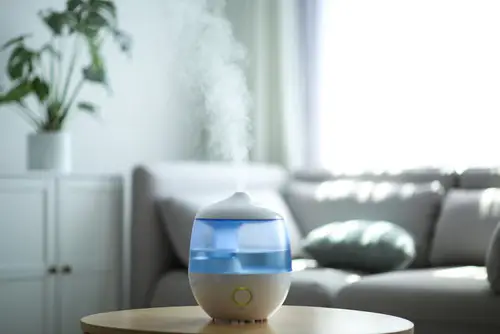
Diffusers and humidifiers are both devices that add moisture to the air. However, they work in different ways and are designed for different purposes.
1. Diffusers
Diffusers are typically used to disperse essential oils into the air. They work by using ultrasonic vibrations to create a fine mist of water and essential oils that is released into the air. Some diffusers also have LED lights that can change colors, creating a relaxing atmosphere.
There are several types of diffusers, including ultrasonic diffusers, nebulizing diffusers, and evaporative diffusers. Ultrasonic diffusers are the most common type and are generally the most affordable. They use ultrasonic vibrations to create a fine mist of water and essential oils that is released into the air.
2. Humidifiers
Humidifiers are devices that add moisture to the air to increase the humidity in a room. They work by using either steam or ultrasonic vibrations to create a fine mist of water that is released into the air. There are several types of humidifiers, including impeller humidifiers and steam vaporizers.
Impeller humidifiers use a rotating disc to create a fine mist of water that is released into the air. They are generally the most affordable type of humidifier and are best suited for small rooms.
Steam vaporizers, on the other hand, use boiling water to create steam that is released into the air. They are best suited for larger rooms and are often used to relieve symptoms of colds and flu.
3. Diffusers vs. Humidifiers
While diffusers and humidifiers both add moisture to the air, they are designed for different purposes. Diffusers are designed to disperse essential oils into the air, while humidifiers are designed to increase the humidity in a room.
It is possible to use a diffuser as a humidifier for plants, but it may not be as effective as using a humidifier. Humidifiers are designed to work with water and are better suited for adding moisture to large rooms or multiple plants. Diffusers may be more effective in small areas or placed next to single plants..
The Role of Humidity for Plants
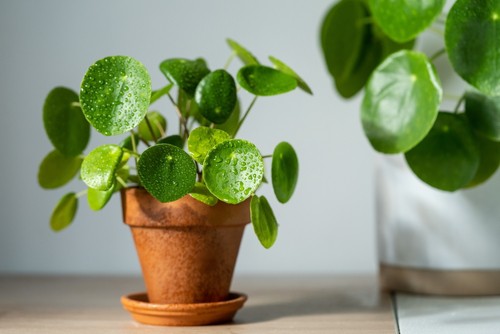
Humidity plays a crucial role in the growth and development of plants. It refers to the amount of moisture present in the air. Plants absorb moisture through their roots and release it through transpiration, a process by which water evaporates from the plant’s leaves.
The optimal humidity levels for plants vary depending on the species. Tropical plants, for example, require high humidity levels, while cacti can thrive in dry air. Aerial roots, common in plants like orchids, rely on high humidity levels to absorb moisture from the air.
When the air is too dry, plants can experience stress, which can lead to stunted growth, leaf drop, and even death. In contrast, high humidity levels can promote the growth of fungi and other harmful microorganisms.
Relative humidity is a measure of the amount of moisture in the air compared to the maximum amount of moisture the air can hold at a given temperature. Ideally, plants should be kept in an environment with a relative humidity of around 50%.
Maintaining the ideal humidity levels for plants can be challenging, especially in dry or arid regions. This is where humidifiers come in handy. Humidifiers release moisture into the air, increasing the humidity levels in the environment.
While diffusers can also release moisture into the air, they are not as efficient as humidifiers. Diffusers are primarily designed to disperse essential oils and are not designed to increase humidity levels in the environment.
Using a Diffuser as a Humidifier for Plants
Diffusers and humidifiers are both used to add moisture to the air, but they work in slightly different ways. While humidifiers use a wick or filter to absorb water and release it into the air, diffusers use ultrasonic vibrations to create a fine mist of water that is released into the air. So, can a diffuser be used as a humidifier for plants?
The short answer is yes, you can use a diffuser as a humidifier for plants, especially in small spaces like a plant corner or on shelves. Diffusers are like mini-humidifiers, albeit with a different purpose.
Due to their compact size, they don’t produce much moisture, so they won’t significantly alter the humidity in spacious rooms. However, they can be useful in dry environments or small rooms where the air tends to be drier.
To use a diffuser as a humidifier for plants, simply fill the water tank with clean water and add a few drops of essential oil if desired. Place the diffuser near the plants and turn it on. The mist created by the diffuser will increase the humidity around the plants, which can help them thrive.
It’s important to note that a diffuser may not be as effective as a dedicated plant humidifier or a larger humidifier for plants. In addition, the effectiveness of a diffuser as a humidifier for plants may depend on factors such as the temperature, airflow, and evaporation rate in the area.
Using a hygrometer to monitor the humidity levels can help determine if a diffuser is providing adequate moisture for the plants.
In addition, diffusers may also have a cooling effect, which can be beneficial for plants that prefer cooler temperatures. However, it’s important not to place the diffuser too close to the plants, as the mist can cause water damage to the leaves and stems.
Overall, while a diffuser can be used as a humidifier for plants in small spaces, it may not be the most effective option for larger areas or plants that require higher humidity levels.
Impact of Essential Oils on Plants
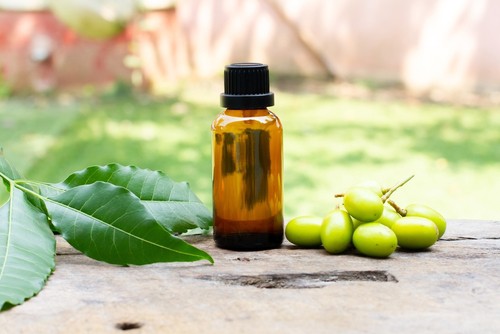
Essential oils have been used for their therapeutic benefits and in aromatherapy for centuries. However, when it comes to using essential oils near plants, caution is advised. Some essential oils can have a negative impact on plant growth and health, while others may be beneficial.
Cinnamon oil, for example, has been found to have antifungal properties and can help prevent mold and mildew growth on plants. Tea tree oil is another essential oil that has antifungal and antibacterial properties, making it useful for preventing plant diseases. Neem oil is also a popular choice for its insecticidal properties and ability to repel pests.
While some essential oils can be beneficial for plants, others can be harmful. Using essential oils near plants that are sensitive to strong scents or oils can cause damage to the plant. Essential oils can also cause the stomata of plants to close, inhibiting their ability to absorb CO2, which is necessary for photosynthesis.
It is important to use essential oils in moderation and to dilute them with water before using them near plants. Essential oils should also be used in well-ventilated areas to prevent the buildup of harmful chemicals.
Potential Risks and Precautions
While using a diffuser as a humidifier for plants can be beneficial, there are some potential risks and precautions that should be considered.
One of the biggest concerns is the risk of mold growth. When using a diffuser, it is important to clean it regularly and use distilled water to prevent the growth of mold and other harmful bacteria. Mold can be harmful to both plants and humans, and can cause respiratory problems and allergic reactions.
Another risk is the attraction of pests, such as ants, to the moist environment created by the diffuser. It is important to monitor the area around the plants and take measures to repel pests if necessary.
In addition, using a diffuser as a humidifier can increase the risk of fungal infections in plants. To prevent this, it is important to avoid over-watering and ensure proper drainage for the plants.
Using a diffuser can also lead to dry skin, especially during the winter months when indoor air quality can be low. It is recommended to use a humidifier specifically designed for plants to avoid this issue.
Furthermore, diffusers can create static electricity, which can be harmful to both plants and pets. It is important to monitor pets, such as cats and dogs, around the diffuser and take precautions to prevent any harm.
Specific Plant Species and Humidity Requirements
Different plant species have different humidity requirements. Some plants are native to dry environments and require low humidity levels, while others are tropical and thrive in high humidity environments. Here are some specific plant species and their humidity requirements:
1. Succulents
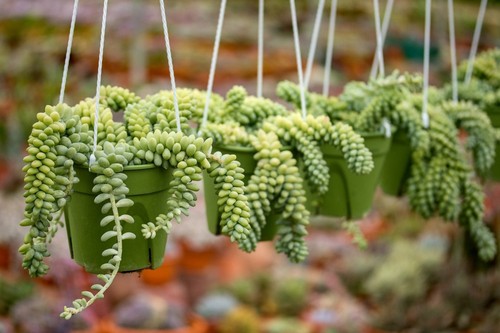
Succulents are known for their ability to store water in their leaves, making them ideal for dry environments. These plants require low humidity levels, usually between 30-50%. High humidity levels can cause succulent leaves to rot and lead to fungal diseases.
2. Tropical Species
Tropical plants, such as ferns and palms, require high humidity levels, usually between 60-90%. These plants are native to humid environments and need constant moisture to thrive. A diffuser can be used as a humidifier to provide the necessary humidity levels for tropical plants.
3. Native Species
Native plants are adapted to the natural humidity levels in their environment. These plants may require lower or higher humidity levels depending on their natural habitat. It is important to research the specific humidity requirements of native plants before using a diffuser as a humidifier.
4. Orchids
Orchids are a popular houseplant known for their delicate flowers. These plants require high humidity levels, usually between 50-70%. A diffuser can be used as a humidifier to provide the necessary humidity levels for orchids.
Additional Humidifying Techniques
In addition to using a diffuser as a humidifier for plants, there are other techniques that can help increase the humidity levels in the air around your plants.
1. Pebble Tray
One technique is to use a pebble tray. This involves filling a tray with pebbles and adding water until it reaches just below the top of the pebbles. The plant is then placed on top of the pebbles, allowing the water to evaporate and increase the humidity around the plant.
2. Water Vapor
Another technique is to use water vapor. This can be achieved by placing a pot of water on a stove or using a humidifier that produces warm or cool mist. The water vapor will increase the humidity in the air and benefit the plants.
3. Cool Mist vs. Warm Mist
When using a humidifier, it is important to consider whether to use a cool mist or warm mist. Cool mist humidifiers are better suited for plants as they do not heat up the water, which can affect the temperature and humidity levels around the plants. Warm mist humidifiers, on the other hand, can be beneficial in colder climates as they can help raise the temperature in addition to increasing humidity.
4. Technology
There are also different technologies available for humidifiers, such as ultrasonic and evaporative. Ultrasonic humidifiers use high-frequency vibrations to create a fine mist, while evaporative humidifiers use a fan to blow air through a wet wick or filter, creating a cool mist.
5. Heater
Finally, it is important to note that using a heater can decrease the humidity levels in a room. If using a heater, it is important to monitor the humidity levels and use additional humidifying techniques as necessary to ensure the plants are not adversely affected.
Choosing the Right Diffuser or Humidifier
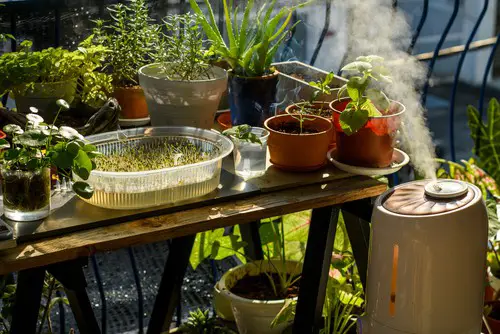
When it comes to choosing the right diffuser or humidifier for your plants, there are a few factors to consider. Firstly, it is important to note that while diffusers and humidifiers share some similarities, they are not interchangeable.
Diffusers are primarily used to disperse essential oils into the air, while humidifiers are designed to add moisture to the air. If your main goal is to increase humidity levels for your plants, a humidifier is the better choice.
When choosing a humidifier, there are two main types to consider: ultrasonic humidifiers and steam vaporizers. Ultrasonic humidifiers use high-frequency vibrations to turn water into a fine mist that is released into the air.
They are generally quieter and more energy-efficient than steam vaporizers. However, they do require regular cleaning to prevent the growth of mold and bacteria.
Steam vaporizers, on the other hand, use heat to boil water and release steam into the air. They are effective at increasing humidity levels quickly and are less prone to mold and bacteria growth. However, they can be noisy and consume more energy than ultrasonic humidifiers.
Budget is another important consideration when choosing a diffuser or humidifier. Diffusers tend to be more affordable than humidifiers, but they may not be as effective at increasing humidity levels. If you are on a tight budget, a basic ultrasonic humidifier may be a good option.
Finally, if you are using an oil diffuser for your plants, it is important to choose one that is designed for that purpose. Some diffusers are not suitable for use with essential oils and may cause damage to your plants. Look for a diffuser that has a large water tank and a long run time, as this will ensure that it can effectively disperse moisture into the air.
Frequently Asked Questions
Can a diffuser act as a humidifier for plants?
Yes, a diffuser can act as a humidifier for plants to some extent. Diffusers disperse water into the air in the form of a fine mist, which increases the humidity levels around the plants. However, they are not as effective as humidifiers in maintaining a consistent humidity level.
Is a diffuser or humidifier better for plants?
Humidifiers are better for plants as they are designed to maintain a consistent humidity level, which is essential for the growth and health of plants. Diffusers, on the other hand, are primarily used for dispersing essential oils and are not as effective in maintaining a consistent humidity level.
What can I use instead of a humidifier for plants?
You can use other methods to increase the humidity levels around your plants, such as placing a tray of water near the plants, misting the plants with water, or grouping plants together. However, these methods may not be as effective as using a humidifier.
Are essential oils safe for plants?
Essential oils can be safe for plants when used in moderation and diluted properly. However, some essential oils can be toxic to plants, so it is important to research the specific essential oil before using it around your plants.
What essential oils are good for plants?
Some essential oils that are good for plants include lavender, peppermint, eucalyptus, and tea tree oil. These oils can help repel pests and promote growth. However, it is important to use them in moderation and dilute them properly.
Can you use a diffuser without oil?
Yes, you can use a diffuser without oil. Simply fill the diffuser with water and turn it on to disperse the water into the air in the form of a fine mist. This can help increase the humidity levels around your plants.

Hey, I’m Lisa and I’ve been an avid gardener for over 30 years. I love writing, talking and living in the garden! Feel free to connect with me on my socials below


